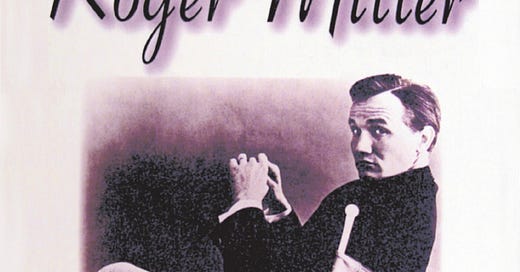“A Man Like Me” isn’t one of Roger’s many famous songs; it doesn’t have any of his idiosyncratic Roger-isms. It’s merely excellent, one of many examples of textbook honky tonk material that Roger cranked out before he broke through as an artist.
I recommend this collection, which has his hits, a few early items, and some songs from the out of print album of straight honky tonk he did with Buddy Emmons. (As with so many of my favorite recordings, my friend and colleague Dave Van Allen, a great pedal steel player and country music scholar, turned me on to that material.)
It’s a simple song, in some ways; it’s a perfect vehicle for looking at song structure.
The full song:
screenshot of my loops page from Amazing Slowdowner phone app
Here are the loops, in order
First up: instrumental intro. It’s an instrumental version (fiddle, pedal steel guitar) of the four bar refrain that comes at the end of each verse/refrain structure. VR= verse/refrain.
INSTRUMENTAL INTRO
A1. This is the first verse/refrain. Verse/refrain structure is old-fashioned now, but it still works great. The modern popular structure is verse-chorus structure, where a verse and a chorus are standalone sections, often eight bars apiece. In verse/refrain structure, the refrain functions like a short chorus, “growing out of” the verse. “Heaven help the man like me who walks alone” are the words.
Verse/refrain one.
In my loops, I’ve combined verse and refrain as one section. Here they are separated so you know exactly which is which.
First verse, without refrain:
Refrain that comes at the end of the first verse:
B1 section. I’d call this a B section, and if someone insisted I give it a name, I’d call it a bridge. It basically gives you a break from the main part, the verse/refrain.
B section.
A2, second verse/refrain. I love that the piano comes on with the line “the honky tonks have no appeal.”
Here’s the instrumental break. I called it intro 2 in my loop list, because just like the intro, it’s an instrumental version of the refrain. Unlike the intro, the steel takes the lead this time.
Interesting structural development here: instead of the verse/refrain coming in again, we get the B part again. The logic here (I’m guessing) is that Roger wanted to close the song with the third verse/refrain, but then he would have only had one B section, and the song would have been 20 seconds shorter. It’s only 2:30 as it is, so adding a second B makes sense. Two rules of arranging I try to use are use three choruses (or refrains), and surprises tighten the listener experience.
When the B section comes in after the repeat of the intro, it’s unexpected; this makes it fresh.
B section repeat:
Now, the final verse/refrain:
Okay, that’s all the sections posted separately, with a rough guide to the structure.
I recommend listening to the whole song, then each section by itself, in order, and reading my brief explanations.
Then try listening to the whole song again, following along with the structural explanation. This active listening exercise will help you internalize a sense of how song structure works. (There are other song structures than this one and verse-chorus-bridge, but if you can follow the structure here, it will be easier to get up to speed on the others.)
For the studious student: observe how many bars you find in each section, and also observe which sections repeat lyrics.
Chord theory note: the verses are I and IV, the refrains are V and I, and the B section is I IV II V, the only time a II chord is used.
please feel free to ask questions! I’m trying not to overexplain everything here; but I can get into a little more depth even for the free subscribers IF they ask questions. This is the early phase of Song Factory where everything is free, so you’re welcome to take advantage of that.







"it's merely excellent" ...well dang me that's a good way to put it! Hey are you a fan of Kitty Wells? They remind me of each other sometimes.
You’re Gonna Make Me Lonesome When You Go is my favorite example of a verse/refrain/bridge song… Thanks, Karl!